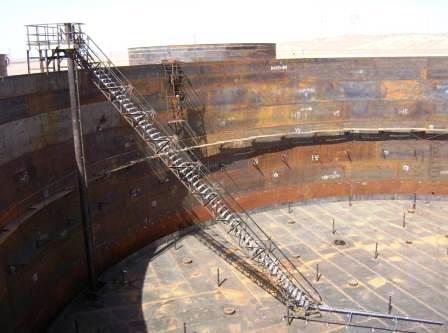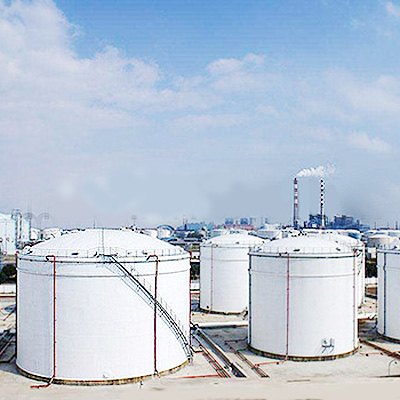Exploring API 650 Welding Inspection Standards for Efficient Tank Fabrication
Wiki Article
A Detailed Check Out the Installation Refine of Welding Evaluation Techniques
Welding examination is an essential procedure that guarantees structural stability and safety. The setup of evaluation strategies includes several organized steps, each indispensable to achieving reputable results. From planning and device selection to performing aesthetic and non-destructive examinations, each stage demands mindful interest. Understanding these procedures can substantially enhance high quality assurance in welding tasks. What challenges develop in applying these methods, and how can they be successfully dealt with?Comprehending the Significance of Welding Inspection
Welding assessment is a vital part of ensuring architectural stability and security in building and construction and production procedures. This method includes reviewing bonded joints for defects, making sure that they meet particular requirements and guidelines. By methodically determining weld high quality, examiners can identify issues such as splits, voids, and insufficient fusion, which can compromise the strength and sturdiness of structures.The relevance of welding examination expands past instant safety and security problems; it assists stop pricey failures and possible threats in the lengthy term. Efficient examination techniques foster conformity with sector criteria, consequently boosting the overall integrity of bonded elements. In addition, a robust evaluation process adds to keeping the online reputation of contractors and producers, as it assures clients of the quality of their projects. Inevitably, recognizing the value of welding inspection is crucial for promoting safe building and construction techniques and making sure the longevity of vital infrastructure and products.
Selecting the Right Tools for Assessment
When picking the proper devices for evaluation, it is essential to consider the certain requirements of the welding procedure and the products involved. Different inspection approaches, such as visual, ultrasonic, and radiographic testing, require distinctive tools customized to their distinct demands. For aesthetic inspections, tools like magnifying calipers and glasses are vital for assessing weld high quality. Ultrasonic screening calls for specific equipment efficient in sending and receiving acoustic waves to find inner flaws. Radiographic testing, on the other hand, makes use of X-ray or gamma-ray resources alongside sensitive film or digital detectors to expose disparities.
In addition, individual safety tools (PPE) is vital to assure the security of examiners during assessments. Choosing the right tools not just enhances the accuracy of evaluations however likewise contributes to the overall integrity and safety of the welding project. A comprehensive understanding of available tools and their applications is essential for effective welding examination.
Preparing for the Inspection Refine
Prior to starting the assessment procedure, it is important to develop a complete plan that details the scope and objectives of the evaluation. This strategy ought to include specific standards that specify what constitutes appropriate high quality in the welding work being evaluated. Recognizing the appropriate codes and standards is essential, as they will guide the examination requirements and methodologies.In addition, workers associated with the inspection has to be effectively trained and licensed in welding assessment methods to assure reliability and accuracy. A list can be useful in arranging the numerous elements of the examination, ranging from devices readiness to ecological conditions that can impact the analysis.

Finally, logistical factors to consider such as organizing, offered sources, and interaction between group participants need to be addressed. By preparing methodically, assessors can boost the effectiveness of the examination and make certain that all crucial elements are appropriately thought about prior to proceeding with the inspection itself.
Conducting Visual Inspections

Performing aesthetic assessments is an important step in the welding inspection process, needing mindful preparation to assure efficient assessment. Inspectors have to recognize with crucial flaw indicators that can signify prospective issues in weld high quality. By focusing on these facets, one can improve the total dependability of the inspection results.
Preparing for Visual Assessment
Visual assessment acts as an important very first step in the welding evaluation procedure, guaranteeing that any type of prospective defects are determined early (API 650 Welding Inspection). Correct preparation is necessary for efficient aesthetic evaluation. Assessors should begin by assessing pertinent documents, consisting of welding procedures and specs, to recognize the task demands. They have to gather required devices, such as multiplying glasses, flashlights, and proper individual safety tools (PPE) A thorough examination of the examination area is important; assessors ought to verify it is complimentary and tidy of blockages. In addition, it is very important to establish suitable lights problems to boost presence of welds. By taking these primary steps, examiners can produce an atmosphere favorable to recognizing disparities and ensuring the honesty of the bonded frameworksKey Problem Indicators
A complete understanding of crucial flaw signs is vital during visual evaluations to ensure the quality and safety of bonded joints. Assessors need to concentrate on certain signs such as fractures, porosity, damages, and incomplete fusion. Cracks might look like sharp lines and can jeopardize architectural stability. Porosity shows up as tiny openings that can deteriorate weld toughness. Undercuts, which are grooves along the weld side, can cause tension concentration. Insufficient combination suggests that the weld metal did not properly bond with the base product, leading to my link a weak joint. By systematically recognizing these issues, assessors can establish compliance with sector criteria and boost the general reliability of bonded structures, inevitably adding to more secure operational problems.Executing Non-Destructive Testing Strategies

Various non-destructive testing (NDT) techniques are essential to ensuring the integrity of bonded structures without jeopardizing their capability. These techniques permit inspectors to review weld high quality and discover issues without triggering damages to the materials being checked. Common NDT strategies include ultrasonic testing, radiographic screening, magnetic particle testing, and dye penetrant screening. Each approach offers a specific purpose, attending to various sorts of problems such as cracks, porosity, or insufficient fusion.
Carrying out NDT strategies requires a methodical strategy, starting with selecting the suitable approach based upon the products and the nature of the weld. Training employees in these strategies is important for precise outcomes. Additionally, developing clear treatments and standards guarantees consistency throughout the evaluation procedure. By incorporating NDT right into the welding inspection workflow, organizations can boost the dependability of their items while decreasing potential risks connected with structural failures. This positive method eventually contributes to preserving security and high quality criteria in bonded building and constructions.
Examining and documenting Assessment Results
Effective paperwork and evaluation of assessment outcomes are necessary elements of the welding evaluation process. Precise records of evaluation findings offer as a referral for quality control and compliance with industry criteria. API 650 Welding Inspection. Assessors must use digital systems or structured types to log details such as the kind of weld, inspection approaches employed, and any discrepancies recognized during the evaluationAs soon as information is accumulated, complete analysis is vital. This entails contrasting outcomes against developed standards to determine trends or repeating issues. Analytical tools may be used to evaluate problems and analyze their influence on overall weld high quality.
Additionally, effective interaction of findings to pertinent stakeholders is imperative. Summaries and records must be clear and concise, highlighting vital insights and referrals for corrective activities. By methodically assessing and documenting assessment outcomes, organizations can promote continual renovation in welding practices and improve item honesty.
Frequently Asked Concerns
What Certifications Are Required to Become a Welding Examiner?
To end up being a welding assessor, one commonly needs appropriate qualifications such as AWS CWI, along with experience in welding practices, understanding of welding codes, and effectiveness in assessment strategies to assure top quality and safety standards.Just How Typically Should Welding Inspections Be Conducted?
Welding assessments should be carried out regularly, generally after each weld is finished, and occasionally throughout tasks. Factors such as project complexity, industry standards, and governing demands can affect the regularity of these examinations.What Is the Price of Welding Examination Solutions?
The expense of welding assessment services varies considerably based on elements such as job intricacy, place, and size. Generally, prices range from $100 to $150 per hour, with additional costs for specialized screening and certifications.Exist Certifications for Welding Inspectors?
Yes, there are different certifications for welding inspectors, consisting of those used by the American Welding Society (AWS) and the International Institute of Welding (IIW) These qualifications assure assessors possess the necessary abilities check it out and understanding for effective evaluations.
Exactly how Do I Choose an Examination Company?
To select an evaluation solution provider, one must evaluate qualifications, experience, sector track record, and consumer reviews. Furthermore, comparing solution offerings and pricing can assist assure the selected company fulfills details job requires effectively.Additionally, workers entailed in the examination should be effectively trained and accredited in welding evaluation strategies to ensure reliability and precision. Conducting visual examinations is a necessary action in the welding inspection process, needing mindful preparation to guarantee efficient examination. Aesthetic examination offers as a vital initial action in the welding examination procedure, assuring that any kind of prospective issues are recognized early. Reliable documents and evaluation of helpful hints examination results are necessary parts of the welding assessment procedure. Welding assessments must be carried out routinely, commonly after each weld is finished, and regularly during projects.
Report this wiki page